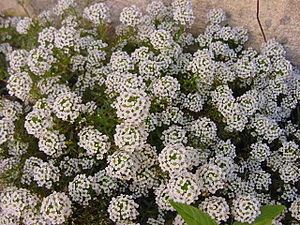[amazon_link asins=’B01N1VB7MD,B06WWGFGFB,B016PNYF6U,B0096PUTLA’ template=’ProductCarousel’ store=’finmeacur-20′ marketplace=’US’ link_id=’aa5d0b7b-a7f5-11e7-8c4c-39d5c0fe1123′]
Botanical Name :Bongardia chrysogonum
Family : Berberidaceae
Genus : Bongardia
Synonyms : Bongardia rauwolfia – C.A.Mey., Leontice chrysogonum – L.
Other Names :Leontice chrysogonum, Bongardia rauwolfia, Golden rod, Lady’s nightcap,
Habitat : N. Africa to W. Asia – Syria to Iran. Steppes, amongst field crops on clayey and solonetzic slopes. Fields, open stony hillsides and waste places.Cultivated Beds;
Description:
Perennial herbs with scapes (20-) 30-50 (-80) cm tall, erect; tuberous rhizome 2-5 cm in diam., almost globose or subglubose. Radical leaves 1-3, imparipinnate or deeply pinnatisect, petiolate, 10-20 (-25) cm long with petiole about 1/4 as long, horizontally spreading; lateral pinnae in 3-8 opposite pairs (rarely 3-4 in a whorl) and a slightly larger terminal pinna closely subtended by a pair of lateral pinnae, oblong-elliptic, sessile, 15-30 mm long, 6-10 (-15) mm broad, glaucous-green, often reddish near the rachis; terminal leaflet distinctly 3-5 toothed at the apex; fresh leaves sometimes mottled with reddish-brown spots. Racemes branched or paniculate in the upper half of the naked scapes, lax, with distant flowers on long bracteate spreading pedicels, Flowers 10-20 mm in diam., yellowish; pedicel 2-5 cm long in fruit, ascending; bracts 4-8 mm long, 2-3 mm broad, oblong-elliptic, entire, sessile. Sepals unequal in size and shape, ovate to suborbicular, 4-6 mm long, caducous. Petals oblong-ovate, lanceolate or elleptic-oblong, 8-12 mm long, 3.5-5 mm broad, yellow, irregularly and sparsely crenulate to entire with usually obtuse and retuse apices. Stamen about half as long as the petal; anthers about as long as the filaments, oblong, opening by 2 valves above. Capsule 10-15 (-20) mm long, 4-8 mm broad, ovoid or oblong-ellipsoid, scarious or membranous grooved or with many folds of the wall, rupturing or splitting irregularly from the tip below; stigma separating with a segment or portion of the wall with a conspicuous dark line below; seeds 1-4 (-6), black, pruinose, 2-3 mm in diam.
CLICK TO SEE THE PICTURES
The plant prefers light (sandy) soils, requires well-drained soil and can grow in nutritionally poor soil. The plant prefers acid, neutral and basic (alkaline) soils. It cannot grow in the shade. It requires dry or moist soil and can tolerate drought.
Cultivation:
Requires a well-drained sandy soil and a position in full sun. Strongly dislikes wet conditions. Plants must have hot, dry conditions during their summer dormancy and must not be allowed to become too wet in winter, therefore they are best grown in a bulb frame. Plants can be very long lived.
Propagation
Seed – best sown as soon as it is ripe in the greenhouse, putting about 3 -4 seeds in each pot. Use deep pots since the seedlings produce a contractile root that can pull themselves down to a depth of 15 – 30cm before sending up their first leaf. The seed germinates in autumn and the first leaf appears in the spring. Grow the plants on in the greenhouse for at least 3 years before planting them out. Division is sometimes suggested as a means of increase, but is not possible for this species
Edible Uses
Edible Parts: Leaves; Root.
Tuber – baked or boiled. The leaves are eaten raw or cooked in the same manner as sorrel.
Bongardia chrysogonum’s leaves are edible as raw and the tubers as baked or boiled. (Hedrick. U.P. Sturtevant’s Edible Plants of the World. Dover Publications 1972; Facciola. S. Cornucopia – A Source Book of Edible Plants. Kampong Publications 1990)
Medicinal Actions & Uses
Antispasmodic.
A treatment for epilepsy.
Disclaimer:The information presented herein is intended for educational purposes only. Individual results may vary, and before using any supplements, it is always advisable to consult with your own health care provider.
Resources:
http://www.pfaf.org/database/plants.php?Bongardia+chrysogonum
http://www.avonbulbs.co.uk/bongardia-chrysogonum_275_277.htm
http://www.efloras.org/florataxon.aspx?flora_id=5&taxon_id=250064049
http://www.flowersinisrael.com/Bongardiachrysogonum_page.htm






















![Reblog this post [with Zemanta]](https://i0.wp.com/img.zemanta.com/reblog_e.png?w=580)










